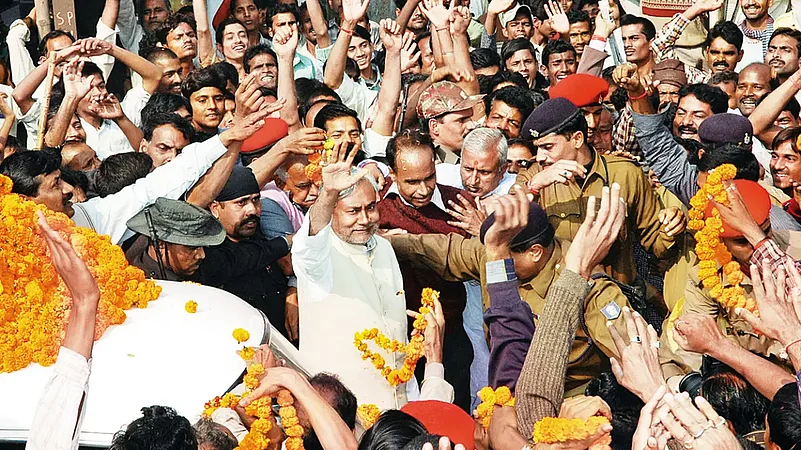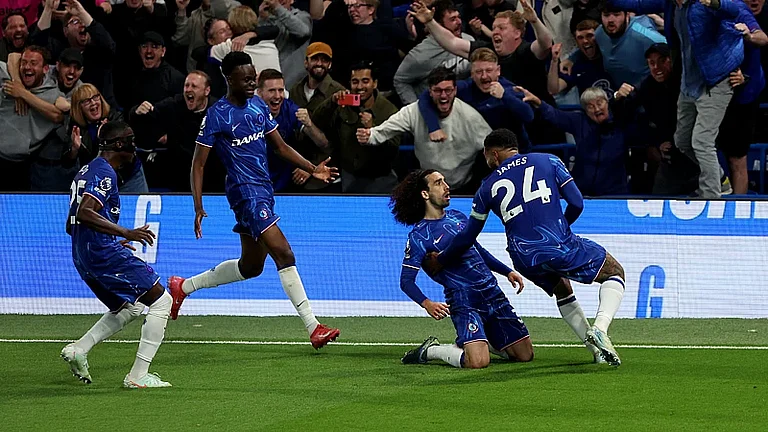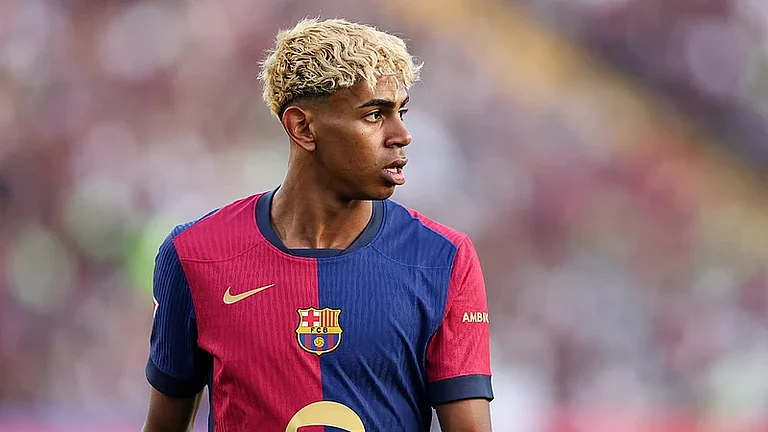Back in 2010, when Lalan Singh, the erstwhile Bihar state president of Janata Dal-United, resigned, accusing Nitish Kumar of being “an autocrat who cares little about internal democracy in the party”, BJP leader Sushil Kumar Modi—deputy chief minister in the NDA government at the time—was quick to defend the chief minister. “JD-U matlab (means) Nitish Kumar,” he said. “Whoever comes or goes out of it makes no difference to the party.”
Over the past 12 years, the times and Bihar politics have changed. Lalan Singh has since become the national president of JD-U and is at present the most vocal supporter of Nitish in town, while Sushil has turned a bitter critic of the chief minister, ever since the Mahagathbandhan government was formed last month. What has not changed in all these years is that Sushil’s opinion still holds true as far as Nitish’s pre-eminent position in his party is concerned. JD-U still means Nitish Kumar, and vice-versa.
Leaders have come and gone and confidants have turned critics, but Nitish remains the numero uno leader of JD-U. He has been heading a ‘one-leader party’ for many years, especially since he was anointed the NDA’s CM candidate, ahead of the November 2005 Bihar assembly polls.
The scenario is no different in the Rashtriya Janata Dal (RJD), where Lalu Prasad Yadav remains the monarch of everything he surveys in the party. His son and heir-apparent Tejashwi Prasad Yadav calls his father an “ideology”. “He is not merely a leader, he has become an ideology,” he has claimed many times in the past few years.
Among many similarities that Lalu and Nitish share, the most striking is that no second rung leadership has been able to grow organically under their shadows. It may sound ironic to many, given the fact that both leaders still swear by Ram Manohar Lohia’s concept of socialism and owe their rise in politics to Jayaprakash Narayan’s Total Revolution movement. Both of their political idols considered nepotism or autocracy to be the bane of any party having internal democracy and providing a level-playing field to all its grassroots workers to climb up the ladder.

For Lalu, the second rung of leadership in RJD has always meant his immediate family. He anointed his wife Rabri Devi as his successor when he had to quit as CM after being charge-sheeted in the Rs 950-crore animal husbandry scam in July 1997. It was done in utter disregard of the claims of senior party leaders such as Ranjan Prasad Yadav, who had until then been calling the shots as No. 2 in the party. There were initially some murmurs over the decision to make Rabri—who wasn’t even a primary member of the party—the CM, but it didn’t make any difference. Ranjan quit the party and even joined the JD-U, but he gradually faded from the scene. Other senior leaders like Raghuvansh Prasad Singh, Jagdanand Singh, Abdul Bari Siddiqui and Ram Chandra Purve acquiesced to Lalu’s decision without demur.
Even when Lalu’s political fortunes subsequently plummeted due to his incarceration in fodder scam cases as well as Nitish’s ascendancy, he did not repose his trust in any second-rung leader. Ahead of the 2010 assembly elections, he called his youngest son Tejashwi, who had been happy playing cricket in IPL until then, to join him and Rabri on the campaign trail. Tejashwi was not even eligible to contest any elections at the time, but Lalu had apparently seen enough potential in him as his possible successor. He chose to ignore Raghuvansh Prasad Singh, a veteran leader with impeccable credentials who had made a mark as the Union minister for rural development in the UPA I government. Shortly before his death in 2020, Raghuvansh quit the party due to his unease with Lalu’s sons helming the party.
How much importance Lalu has given to the second-rung of RJD leaders could also be illustrated by the way his long-time loyalist Ram Kripal Yadav quit the party. Ram Kripal had been Lalu’s staunchest supporter from the beginning of his political career. Ahead of the 2014 Lok Sabha polls, Lalu fielded his eldest daughter Misa Bharti from the Patalipura constituency, overlooking the claims of Ram Kripal, who enjoyed considerable support from voters there. Disgruntled, Ram Kripal decided to hop over to BJP, contest the polls from the same seat, and was made a Union minister after he defeated Misa. Thankfully for Lalu, Tejashwi proved his mettle in the 2020 assembly polls, when he led from the front in Lalu’s absence. Lalu’s elder son, Tej Pratap Yadav, is also a beneficiary of dynasty politics. In a short political career, he has twice bagged ministerial portfolios in two Mahagathbandhan governments, even though many senior leaders such as Jagdanand Singh have expressed serious reservations about his capabilities. A big controversy erupted recently when Tej Pratap took Shailesh Kumar (Misa Bharti’s husband) to an official meeting. But then, as the BJP alleged later, that is how Lalu runs his party.
Nitish, on the other hand, has not faced any charges of nepotism so far. His son, Nishant Kumar, has steered clear of politics. So have Nitish’s siblings. JD-U leaders, in fact, often hail him for keeping his family out of politics. But his party still lacks a second line of leadership.
Shortly before he quit the JD-U recently, when some supporters of former Union minister RCP Singh hailed him as the next Bihar CM, many JD-U leaders took umbrage, reiterating that Nitish was their only leader. In fact, whenever senior party functionaries have fought among each other over the No. 2 spot, the party has doused the fire by asserting that none other than Nitish remains its undisputed leader.
For many years, RCP was considered Nitish’s second-in-command because of his enormous clout, but he too quit in a huff after he fell out of Nitish’s favour over his alleged closeness to the BJP. Some time ago, Nitish had appointed Prashant Kishor as party vice president and dropped a veiled hint that Kishor might be his successor, but he too left the party soon after.
As of now, there is nobody in the party who could be considered Nitish’s successor. This was not always the case in the JD-U, which once boasted of stalwarts like George Fernandes and Sharad Yadav. But they left one after another, leaving Nitish to run it like a one-man show.
Political observers do not see anything unusual in this. JD-U and RJD have always got votes in the name of their supremos. Over the years, any leader who has tried to defy the RJD leadership has invariably found themselves consigned to political wilderness. In 2013, when Shivanand Tiwari tried to caution Nitish about the growing influence of Narendra Modi, he was shown the door. Similar has been the case with many small or big leaders of RJD who tried to challenge Lalu.
Take it or leave it, Nitish still means JD-U, and RJD is all about Lalu and his family.
(This appeared in the print edition as "That Familial Feeling")


























